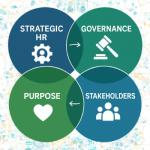Finding and writing a winning grant proposal
At NFP Success we have assisted many organisations to successfully identify and win grants. We have had the privilege of witnessing firsthand the criticality of grants as a source of funding for these organisations. Nonetheless, with a plethora of charities vying for limited funding, it's essential to pen an awe-inspiring grant proposal that can set itself apart from the rest. In this article, we will explore the intricacies involved in finding and penning a prosperous grant proposal for not-for-profits and charities in Australia.
The first step in this arduous yet indispensable journey is research. Before embarking on a quest to draft a grant proposal, it's of paramount importance to conduct comprehensive research and pinpoint prospective funding sources. The Australian government at all levels, provides various grants for NFPs and charities. Moreover, several private foundations and philanthropic organisations offer grants. While researching potential grant sources can be time-consuming, it's a crucial step in the right direction. One can opt for grant databases to help streamline the process.
The next step in this laborious journey is to analyse the grant requirements meticulously. Once prospective grant sources have been identified, it's vital to carefully scrutinise the grant requirements. This analysis will enable you to gain a comprehensive understanding of the grant's purpose, goals, and objectives. Pay close attention to the funding priorities, eligibility criteria, and guidelines for submitting the grant proposal. It's also essential to identify the target audience for the grant, which may be regional, state, or national. This understanding will help you customise your grant proposal to meet their specific needs and objectives.
After analysing the grant requirements, the next step is to develop a grant proposal outline. Before putting pen to paper, outlining the proposal's structure can go a long way in aiding a well-structured proposal that will enable the reader to understand your organisation's goals and how you plan to achieve them. A typical grant proposal should contain an executive summary, which is a brief summary of the proposal that highlights the key points. This should be followed by a background section, which should offer an overview of the organisation's history, purpose, and achievements.
A needs assessment section should then describe the needs that the proposal aims to address, while the goals and objectives section should contain a statement of the proposed project's goals and objectives. Furthermore, the activities section should feature a detailed description of the project activities, including timelines and milestones. The budget section should then outline in detail the costs associated with the proposed project, while the evaluation section should comprise a plan for evaluating the project's success and impact.
With the grant proposal outline in place, the next step is writing the grant proposal itself. When writing the grant proposal, always bear in mind the grant's purpose, goals, and objectives. Use clear and concise language, avoiding technical jargon. The proposal should be persuasive and demonstrate why your organisation is the best fit for the grant. Make sure to include examples of your organisation's past successes and accomplishments, using data and statistics to support your claims. This is crucial as funders will be looking at how well you will articulate the success of the grant post project.
The penultimate step in this daunting journey is to review and submit the proposal. Before submitting your proposal, ensure that you have thoroughly reviewed it for errors, inconsistencies, and typos. It's highly recommended to have someone else review it as well. Ensure that you have included all the required documentation, such as financial statements and letters of support. Finally, submit the proposal before the deadline, allowing enough time for any unforeseen circumstances.
The process of finding and writing a winning grant proposal for not-for-profits and charities in Australia is multi-faceted and requires significant effort and attention to detail. The steps outlined in this article, including researching potential grant sources, analysing grant requirements, developing a grant proposal outline, writing the proposal with persuasive language and clear data, and reviewing and submitting the proposal, can help increase the likelihood of securing funding. By approaching the grant writing process with a strategic mindset, you can maximize their chances of success and continue making a positive impact in your community.








